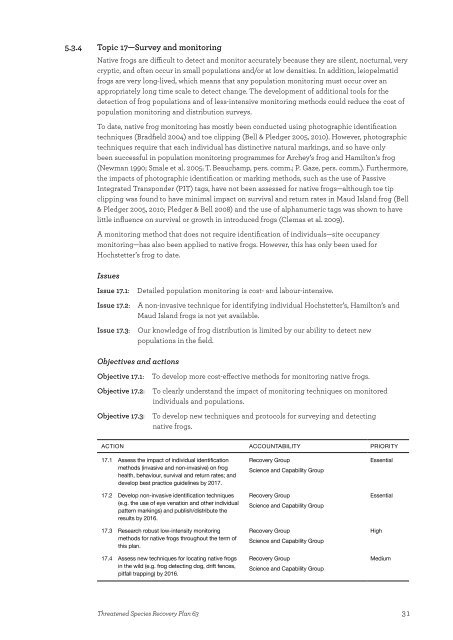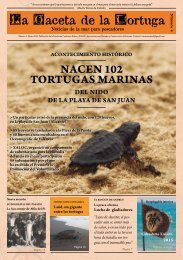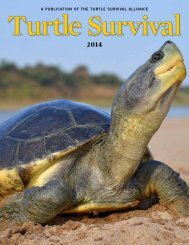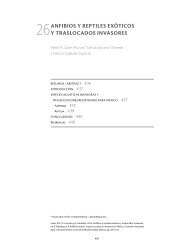tsrp63entire
tsrp63entire
tsrp63entire
Create successful ePaper yourself
Turn your PDF publications into a flip-book with our unique Google optimized e-Paper software.
5.3.4 Topic 17—Survey and monitoring<br />
Native frogs are difficult to detect and monitor accurately because they are silent, nocturnal, very<br />
cryptic, and often occur in small populations and/or at low densities. In addition, leiopelmatid<br />
frogs are very long-lived, which means that any population monitoring must occur over an<br />
appropriately long time scale to detect change. The development of additional tools for the<br />
detection of frog populations and of less-intensive monitoring methods could reduce the cost of<br />
population monitoring and distribution surveys.<br />
To date, native frog monitoring has mostly been conducted using photographic identification<br />
techniques (Bradfield 2004) and toe clipping (Bell & Pledger 2005, 2010). However, photographic<br />
techniques require that each individual has distinctive natural markings, and so have only<br />
been successful in population monitoring programmes for Archey’s frog and Hamilton’s frog<br />
(Newman 1990; Smale et al. 2005; T. Beauchamp, pers. comm.; P. Gaze, pers. comm.). Furthermore,<br />
the impacts of photographic identification or marking methods, such as the use of Passive<br />
Integrated Transponder (PIT) tags, have not been assessed for native frogs—although toe tip<br />
clipping was found to have minimal impact on survival and return rates in Maud Island frog (Bell<br />
& Pledger 2005, 2010; Pledger & Bell 2008) and the use of alphanumeric tags was shown to have<br />
little influence on survival or growth in introduced frogs (Clemas et al. 2009).<br />
A monitoring method that does not require identification of individuals—site occupancy<br />
monitoring—has also been applied to native frogs. However, this has only been used for<br />
Hochstetter’s frog to date.<br />
Issues<br />
Issue 17.1:<br />
Issue 17.2:<br />
Issue 17.3:<br />
Detailed population monitoring is cost- and labour-intensive.<br />
A non-invasive technique for identifying individual Hochstetter’s, Hamilton’s and<br />
Maud Island frogs is not yet available.<br />
Our knowledge of frog distribution is limited by our ability to detect new<br />
populations in the field.<br />
Objectives and actions<br />
Objective 17.1:<br />
Objective 17.2:<br />
Objective 17.3:<br />
To develop more cost-effective methods for monitoring native frogs.<br />
To clearly understand the impact of monitoring techniques on monitored<br />
individuals and populations.<br />
To develop new techniques and protocols for surveying and detecting<br />
native frogs.<br />
Action Accountability Priority<br />
17.1 Assess the impact of individual identification<br />
methods (invasive and non-invasive) on frog<br />
health, behaviour, survival and return rates; and<br />
develop best practice guidelines by 2017.<br />
17.2 Develop non-invasive identification techniques<br />
(e.g. the use of eye venation and other individual<br />
pattern markings) and publish/distribute the<br />
results by 2016.<br />
17.3 Research robust low-intensity monitoring<br />
methods for native frogs throughout the term of<br />
this plan.<br />
17.4 Assess new techniques for locating native frogs<br />
in the wild (e.g. frog detecting dog, drift fences,<br />
pitfall trapping) by 2016.<br />
Recovery Group<br />
Science and Capability Group<br />
Recovery Group<br />
Science and Capability Group<br />
Recovery Group<br />
Science and Capability Group<br />
Recovery Group<br />
Science and Capability Group<br />
Essential<br />
Essential<br />
High<br />
Medium<br />
Threatened Species Recovery Plan 63<br />
31





